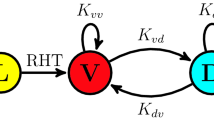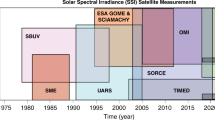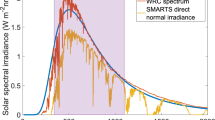Abstract
The Clock Rate. THE proper regulation of this clock error and consequent “trail” of the spectrum across the plate parallel to itself are essential to the success of photographs taken by the objective prisms. The spectrum of a bright star must obviously be made to trail more quickly than that of a fainter one, and a shorter exposure is sufficient. Since for the same clock error, and in the same time, a star near the pole will give a shorter trail than one nearer the equator, declination must also be taken into account. Keeping a constant clock error, equal widths of spectrum for stars of different declinations may be obtained by lengthening the time of exposure for stars away from the equator, but in that case, the stars near the pole would be over-exposed in relation to those nearer the equator.
This is a preview of subscription content, access via your institution
Access options
Subscribe to this journal
Receive 51 print issues and online access
$199.00 per year
only $3.90 per issue
Buy this article
- Purchase on Springer Link
- Instant access to full article PDF
Prices may be subject to local taxes which are calculated during checkout
Similar content being viewed by others
References
Monthly Notices, vol. li. p. 43, 1890–91.
NATURE, vol. xlii. p. 303, 1890.
Roy. Soc. Proc., vol. xliii. p. 150.
Lockyer and Roberts-Austen, Roy. Soc. Proc., 1875, p. 344.
Roy. Soc. Proc., vol. xlv, p. 382.
Monthly Notices, vol. xlviii., p. 360.
Ibid., vol. xlix. p. 124.
Roy. Soc. Proc. vol. xliv., pp. 33–43.
Ibid.
Subsequent eye observations by myself and Mr. Fowler seemed to leave no doubt as to the presence of these bright carbon flutings (Roy. Soc. Proc., vol. xlvii. p. 40). Dr. Copeland had previously made important observations of "Nova" Orionis with reference to this point (Monthly Notices, vol. xlvi. p. 112), and he identified one of the bright bands as "the great hydrocarbon band seen in the spectrum of every comet that has been examined under favourable circumstances." Referring to his observations of Orionis, Mr. Maunder ("Greenwich Spect. Observations," 1889, p. 22) states that "the carbon band at 5164 was coincident (within the limits of observation with this dispersion) with the bright space towards the blue of Dunér's band 7."
Rights and permissions
About this article
Cite this article
LOCKYER, J. The Sun's Place in Nature1: XI. Nature 52, 446–450 (1895). https://doi.org/10.1038/052446a0
Issue Date:
DOI: https://doi.org/10.1038/052446a0
Comments
By submitting a comment you agree to abide by our Terms and Community Guidelines. If you find something abusive or that does not comply with our terms or guidelines please flag it as inappropriate.



